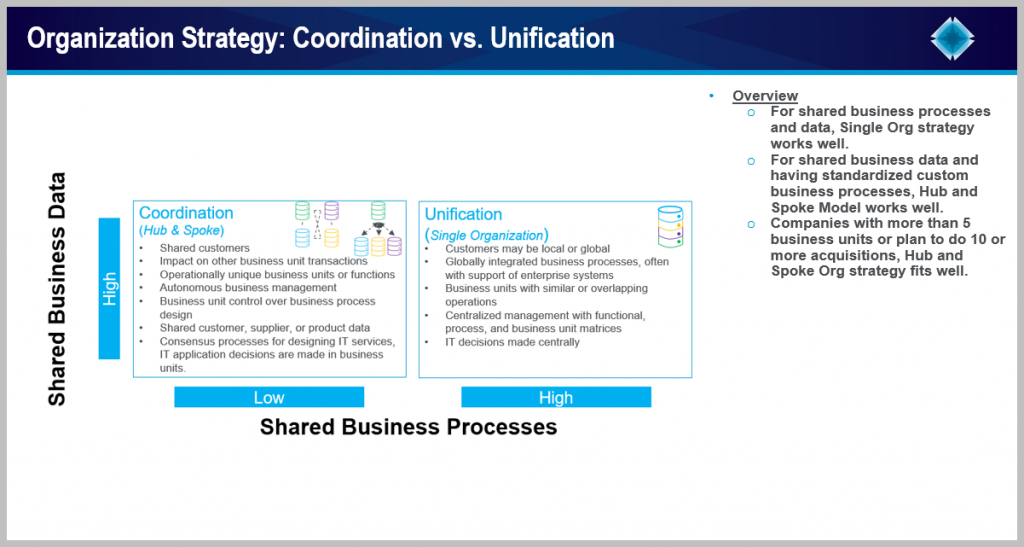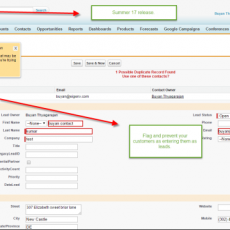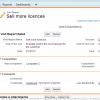If you are an organization that has recently acquired 2 or 3 companies or is in the middle of a merger and acquisition, one of the challenges is to align your CRM strategy from an enterprise perspective compared to the business unit level that each company brings it. As a CIO or COO, one of the pain points is to think about the Org Strategy of how we consolidate or keep them separate and also think about an integration strategy to connect with your ERP systems, Financial systems, and others which throws so many variables in the mix. So how would you plan around a CRM strategy for Mergers and Acquisitions allowing business units to be nimble and still provide the enterprise lens of a combined data source for insights for the C-Level folks?
My post here will provide you with the guidelines that you can use to come up with a CRM strategy.
- Define systems of record for CRM data.
As your organization expands to accommodate the new business units you have acquired, the key question to be resolved is which is the system of record for the following entities?
- Accounts(Customers if you deal with B2B organizations)
- Contacts
- Products
- Pricing
- Contracts
- Opportunities
Now your customer data can be in multiple systems from your core business unit, customer portals in another business unit, and data warehouse in another system. The key principle to apply would be a synchronization strategy between your customer data across systems. Here are some options to think about in syncing customers
- Creating an MDM strategy with centralized customer data which will be dedupe across systems in a data warehouse.
- Identifying one system as a system of record which can be a CRM or financial system and leveraging the unique id of that system and propagating it across systems.
- Leveraging an external customer aggregator like Dun and Brad’s Id or industry-standard IDs and have the account augumentor to dedupe and provide the uniqueness for customers.
Decide on the Business process and Business data.

One of the major initiatives merger and acquisition teams take on is to have standardizations of leads processes and opportunity processes and try to have some common stages for universal reporting. However, there are some unique considerations for products and services where the standards will not apply. So how do you go about setting principles for making decisions between business processes or data?
- Look for unique products/services with unique pricing models across business units that might need to have their own stages.
- How are marketing leads assigned to sales and is there a need for standardization on MQL vs SQL which can be applied to all business units?
- How simple or complex is the contract management process across business units and is there room for standardization of the business processes and teams to manage contracts?
Business data Quality
Before you make a decision on business data consolidation which is the ideal utopian dream for reporting, one of the key initiatives to be done is to review the data quality for business data. Here are some considerations which can be applied to measure data quality.
- Completeness of CRM data like leads and contacts have phone numbers, emails, or addresses
- Standardization of CRM data like states, countries, industry segment, opportunity type, and product categories which are all defined as picklists resulting in good data.
- Duplication of data like duplicate leads, accounts, and contacts, and leveraging data quality tools to measure it.
- The volume of data like the volume of leads, accounts, and contacts which can be a couple of hundreds or millions. The more the volume of data, the more complex it is to fix data quality.
Review Orgs for synergies, uniqueness, and consolidation.
The fourth key factor which needs to be considered prior to an org strategy is to look for similarities and uniqueness across business units. This is important as there could be a possibility of combining a couple of business units into one business unit which can result in one org as well. so the question is how do we look for synergies and what are the factors that will help in identifying them?
- lead stages
- opportunity stages
- account stages from prospect, customer, upsell, and renewals
- campaign stages
- account hierarchies where there are similarities in account hierarchy levels
- products
- common pricing strategies.
- contract creation life cycle and renewals
Based on the above entities, you can create similarities or options to consolidate across a majority of them, we can decide to merge the data between business units which can lead to an org consolidation as well.
So to summarize before you consider an org strategy, here are the key principles which you need to consider.
- Identify the System of records for your CRM data.
- Decision on standardization of business processes.
- Data quality
- Synergies between business units.
As always feel free to let me know of any questions or comments below. You are always welcome to email me at buyan@eigenx.com for further questions. Stay tuned for the next blog article on different Org Strategy options and a toolkit that can help you decide accordingly.!!
Please subscribe
Subscribe to our mailing list and get tips to maximize salesforce to your email inbox.
I am honored to have your subscription. Stay tuned for tips to maximize your salesforce investment
Something went wrong.




